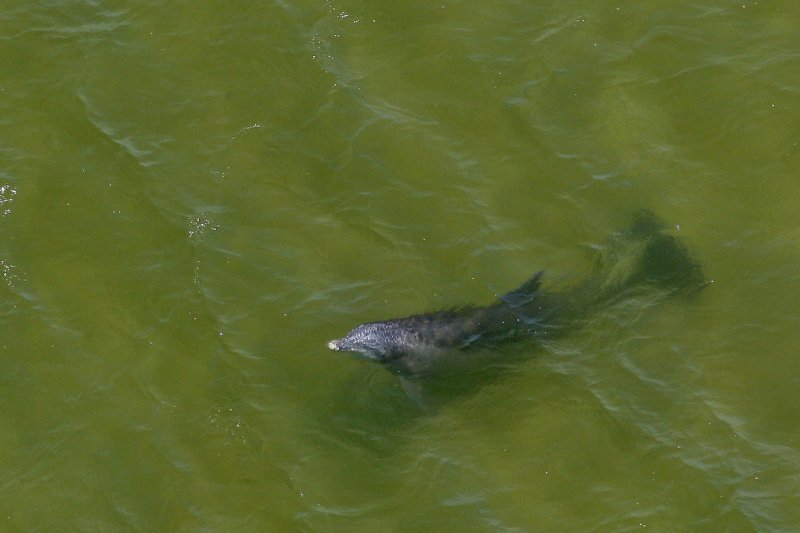A dolphin surfaces in the Gulf of Mexico near East Ship Island off Mississippi July 14, 2010. UPI/A.J. Sisco |
License Photo
WASHINGTON, Dec. 19 (UPI) -- A U.S. government study links the BP oil disaster to Gulf of Mexico dolphin disease, but a spokesman for the oil and gas giant said the study proved nothing.
The study -- led by scientists from the National Oceanic and Atmospheric Administration, a scientific agency within the Commerce Department focused on ocean and atmospheric conditions -- found lung diseases, hormonal defects and other health concerns among bottlenose dolphins in the Gulf's Barataria Bay, off southeastern Louisiana -- one of the most heavily oiled areas in the 2010 spill.
"Many disease conditions observed in Barataria Bay dolphins are uncommon but consistent with petroleum hydrocarbon exposure and toxicity," the scientists said in the study, published Wednesday in the American Chemical Society's peer-reviewed journal Environmental Science & Technology.
Forty-eight percent of 29 dolphins that received comprehensive physical exams were given a guarded prognosis or worse, and 17 percent were listed in poor or grave condition and were expected to die, a NOAA report on the study said.
"These findings are in contrast to dolphins sampled in Sarasota Bay, Fla., an area not oiled by the Deepwater Horizon spill," the report said.
"I've never seen such a high prevalence of very sick animals -- and with unusual conditions such as the adrenal hormone abnormalities," said Dr. Lori Schwacke, the study's lead author who NOAA said earlier conducted similar dolphin health studies across the Southeast.
The scientists caught, examined and released the dolphins in August 2011, 16 months after the disaster, the NOAA report said.
The April 20, 2010, explosion and sinking of the Deepwater Horizon oil rig killed 11 workers. A sea-floor oil gusher that followed the explosion spewed an estimated 4.9 million barrels of crude oil into the Gulf until the well was capped July 15.
"The severe disease documented by this study and the continued elevation of mortalities raise significant concerns regarding both short-term and long-term impacts on the Barataria Bay dolphin population," said the study, quoted by Britain's Guardian newspaper.
BP PLC -- which disputes any connection between the oil spill and a spike in dolphin deaths in the Gulf, first noticed in July 2010 -- said in a statement it "has been funding NOAA's work on this subject for over three years and requesting data throughout this period."
"The agency still has not provided BP with any data demonstrating the alleged poor health of any dolphins was caused by oil exposure. Indeed, NOAA has not even provided BP an injury assessment on dolphins or any other species or habitat," BP said.
BP spokesman Jason Ryan was quoted by the Guardian as saying the symptoms observed in the study were seen in other wild dolphin populations exposed to other contaminants.
He also said other unexplained dolphin die-offs have occurred in the Gulf over the years.















